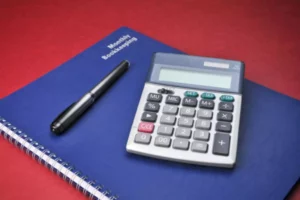Content
- What’s the Relationship Between Accounts Payable and Accounts Receivable?
- Creditors Control Accounts
- Posting to the Accounts Payable Ledger
- Definition and Examples of Control Account
- Example of Control Account
- What is a Control Account?
- Ultimate glossary for accounts receivable, credit control, and debt recovery

If the trial balance does not actually balance, only the accounts whose control account does not reconcile need to be checked for errors. The subsidiary ledger allows for tracking transactions within the control account in further detail. Individual transactions appear in both accounts, but only as an ending balance in the control account. More details such as where the money came from, who it came from and the date it was paid appear in the subsidiary ledger. The details of a control account will be found in a corresponding subsidiary ledger. The control account keeps the general ledger clean of details, but contains the correct balances used for preparing a company’s financial statements.
What balance is creditors control account?
The Creditors Control nominal account represents all the money that you owe your suppliers. Reconciling the balance of this account is something most businesses do regularly.
An organisation’s financial statement listing net income, revenue and expenses over a specific period. Make sure payment terms and banking details are visible to avoid any back and control account forth. Sometimes referred to as Incoterms, these are trade terms that are published by the ICC and that often form the basis of both domestic and international pro forma contracts.
What’s the Relationship Between Accounts Payable and Accounts Receivable?
A calculation based on the percentage of unrecoverable debt compared to total sales figures. AR is considered an asset because you’re counting on receiving that money within the timeline defined when the sale was initiated. AP is considered a liability because you will need to pay out that amount within a certain timeline. The fully revised and updated edition of this textbook provides an accessible introduction to accounting for students coming to the subject for the first time. It embraces the basic techniques and underlying theoretical concepts in accounting and shows how these are applied in various circumstances. The text is fully illustrated with worked examples, and provides student activities and end of chapter questions, many of which have been taken from major accounting examination bodies.
For instance, say our eyewear maker decides to initiate a new $1,000 purchase from Frames Inc. and agrees to pay 50% of the cost upfront and the remainder on delivery. In the case of inventory items, like frames, the expense is recognized when the items are sold to the customer — when the revenue is earned. Generally, the full amount will be recorded as an expense when the invoice is received (assuming the goods or services have been provided). Just as it is in the case of debtor/receivable control accounts, the daily transactions related to creditor/payable control are treated in the same manner.
Creditors Control Accounts
The instructors guide and solutions manual is available for instructors who recommend the book for course use. When you access this website or use any of our mobile applications we may automatically collect information such as standard details and identifiers for statistics or marketing purposes. You can consent to processing for these purposes configuring your preferences below. Please note that some information might still be retained by your browser as it’s required for the site to function.
He also assesses whether the total amount in the control account equates with the amount in the individual supplier account to balance the transaction within the subsidiary ledger. A debtors control account denotes an account within the master ledger that illustrates transactions owed by debtors. Debtors control accounts are also https://www.bookstime.com/ termed receivable control accounts or sales ledger control accounts because transactions among debtors are conducted daily, monthly, or within a specified financial period. A control account is a summary-level account within the general ledger of a business that assists in streamlining detailed transactions in a balance.
Posting to the Accounts Payable Ledger
The balance sheet shows the total amount of accounts payable, but it does not list individual transactions. The control account’s primary purpose is to ensure the subsidiary account’s accuracy by clarifying and rechecking the individual account and their transactions before posting it with the subsidiary account or primary account. For example, a sales ledgerSales LedgerA sales ledger is a ledger entry that records any sale in the book of records, even if the payment is received or not yet received. It records the sales and the cash when received and the amount owed to the business.read more & debtor ledger control account summarizes the transactions entered with the individual accounts in the ledger.

A control account’s final balance should match the linked subsidiary ledger’s ending total. It’s highly likely that a journal entry was made to the control account but not to the subsidiary ledger if the balances don’t match. The purchase ledger control account, or trade creditor control account, is part of the balance sheet and shows at any given time how much you owe to your suppliers.
